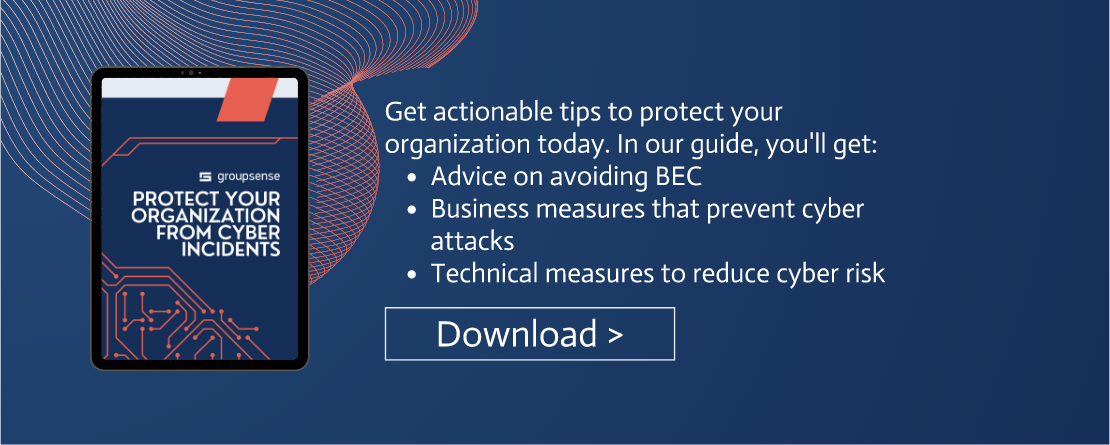Spoofing is a deceptive practice used by cybercriminals to trick individuals and organizations into believing that their messages or actions are coming from a trusted source. In this article, we will explore the concept of spoofing, its different types, and the potential consequences it can have on individuals and businesses. We will also provide tips and strategies to help you protect yourself from falling victim to spoofing attempts.
Understanding the Concept of Spoofing
Spoofing, in the context of cybersecurity, refers to the act of falsifying information or identities to deceive individuals or computer systems. This can involve manipulating email addresses, phone numbers, websites, or other communication channels to make it appear as if the communication is from a legitimate source.
Understanding the concept of spoofing is crucial in today's digital age, where cyber threats are constantly evolving. By gaining insight into how spoofing works and the various types of spoofing techniques, individuals and organizations can better protect themselves against potential attacks.
The History of Spoofing
Spoofing techniques have been used for various purposes throughout history. In the early days of telephony, fraudsters would use caller ID spoofing to manipulate the displayed phone number and impersonate someone else. This allowed them to deceive unsuspecting individuals and gain unauthorized access to sensitive information.
With the rise of the internet, email spoofing became more prevalent. Attackers discovered that by manipulating the email header information, they could send emails that appeared to be sent from trusted entities such as banks, government agencies, or well-known companies. This led to an increase in phishing attacks, where unsuspecting individuals were tricked into revealing personal information or clicking on malicious links.
As technology advanced, so did spoofing techniques. Today, attackers can even spoof IP addresses, making it appear as if their malicious activities are originating from a different location. This makes it difficult to trace the source of the attack and adds another layer of complexity to cybersecurity.
Different Types of Spoofing
Spoofing can take several forms, each targeting different communication channels or vulnerabilities. Understanding the different types of spoofing is essential in recognizing potential threats and implementing appropriate security measures.
Email spoofing is one of the most common types of spoofing. Attackers manipulate the email header information, making it appear as if the email is from a trusted source. This can be used to trick individuals into revealing sensitive information or downloading malicious attachments.
IP spoofing involves falsifying the source IP address of a packet to hide the attacker's identity or to impersonate another system. This technique is often used in distributed denial-of-service (DDoS) attacks, where multiple compromised systems flood a target system with traffic, overwhelming its resources.
Caller ID spoofing is a technique used to manipulate the displayed phone number on a recipient's caller ID. This allows attackers to impersonate someone else, potentially leading to social engineering attacks or financial fraud.
Website spoofing involves creating a fake website that imitates a legitimate one. Attackers can use this technique to trick users into entering their login credentials or financial information, which can then be used for malicious purposes.
Each type of spoofing has its unique characteristics and potential risks. By staying informed about the latest spoofing techniques and implementing appropriate security measures, individuals and organizations can mitigate the risks associated with spoofing and protect themselves against cyber threats.
What can recent phishing attacks tell us about malicious domains? Find out in our blog.
How Spoofing Works
The Technical Aspects of Spoofing
Spoofing relies on exploiting weaknesses in communication protocols and systems. For example, email spoofing exploits the Simple Mail Transfer Protocol (SMTP) to manipulate the source address of an email message. IP spoofing manipulates the source IP address of network packets, making it appear as if the communication is coming from a different source.
Common Spoofing Techniques
There are various techniques that cybercriminals employ to conduct spoofing attacks. Some of the most common ones include domain spoofing, where attackers create fake domains similar to legitimate ones, and clickjacking, where they overlay a malicious link on top of a trusted website to trick users into clicking on it.
The Impact of Spoofing
How Spoofing Affects Individuals
Spoofing can have detrimental effects on individuals. For instance, email spoofing can trick users into revealing sensitive information such as login credentials, leading to identity theft or financial loss. Caller ID spoofing can be used to deceive individuals into providing personal information or engaging in fraudulent activities.
The Consequences of Spoofing for Businesses
Businesses are also vulnerable to the consequences of spoofing. Spoofed emails targeting employees can be used to initiate phishing attacks, tricking them into downloading malware or revealing sensitive corporate information. Website spoofing can lead to reputational damage and financial losses if customers unknowingly interact with fraudulent websites.
Recognizing Spoofing Attempts
Signs of Email Spoofing
There are several indicators that can help you identify email spoofing attempts. Pay attention to mismatched sender and sender email addresses, unexpected or suspicious attachments or links, grammatical errors or poor formatting, and requests for sensitive information.
Indicators of Caller ID Spoofing
Caller ID spoofing can be more challenging to detect, but there are still signs to watch out for. These include receiving unexpected calls from familiar numbers, calls from numbers with the same area code and exchange as your own, or calls with poor call quality or unusual background noises.
Detecting Website Spoofing
To identify website spoofing, look for discrepancies in the website's URL or design, such as misspelled domain names, unsecured connections (lack of HTTPS), or inconsistencies with the content or branding of the legitimate website.
Protecting Yourself from Spoofing
Best Practices for Online Safety
Implementing a few key cybersecurity practices can greatly reduce the risk of falling victim to spoofing. These include regularly updating your devices and software, using strong and unique passwords, being cautious of clicking on suspicious links or downloading attachments, and enabling two-factor authentication whenever possible.
Tools and Software to Prevent Spoofing
There are also specialized tools and software solutions available to help protect against spoofing attacks. These include email security systems that use advanced threat detection mechanisms, firewalls equipped with anti-spoofing functionalities, and caller ID authentication services that validate the legitimacy of incoming calls.
What to Do If You've Been Spoofed
If you suspect that you have fallen victim to a spoofing attack, there are several steps you should take. Report the incident to relevant authorities, such as your email service provider or local law enforcement agencies. Change your passwords and notify your contacts about the incident to prevent further damage. Additionally, consider implementing additional security measures, such as monitoring your accounts for unusual activities or enlisting the help of a cybersecurity professional to investigate the incident.
In conclusion, spoofing is a prevalent cyber threat that can have serious implications for individuals and businesses. By understanding the concept of spoofing, recognizing the signs of spoofing attempts, and implementing robust security measures, you can better protect yourself and your organization from falling victim to these deceptive tactics.





